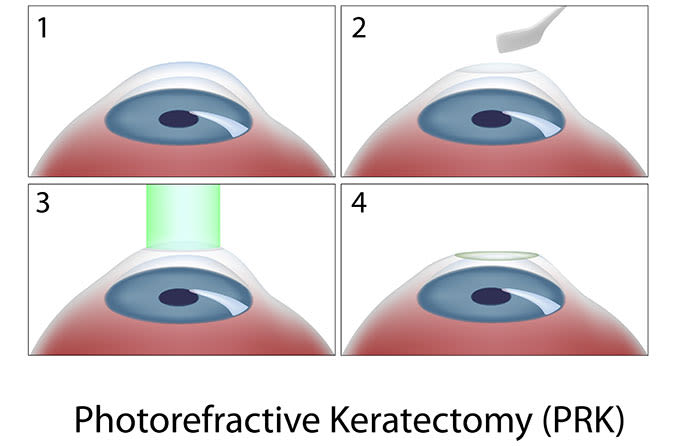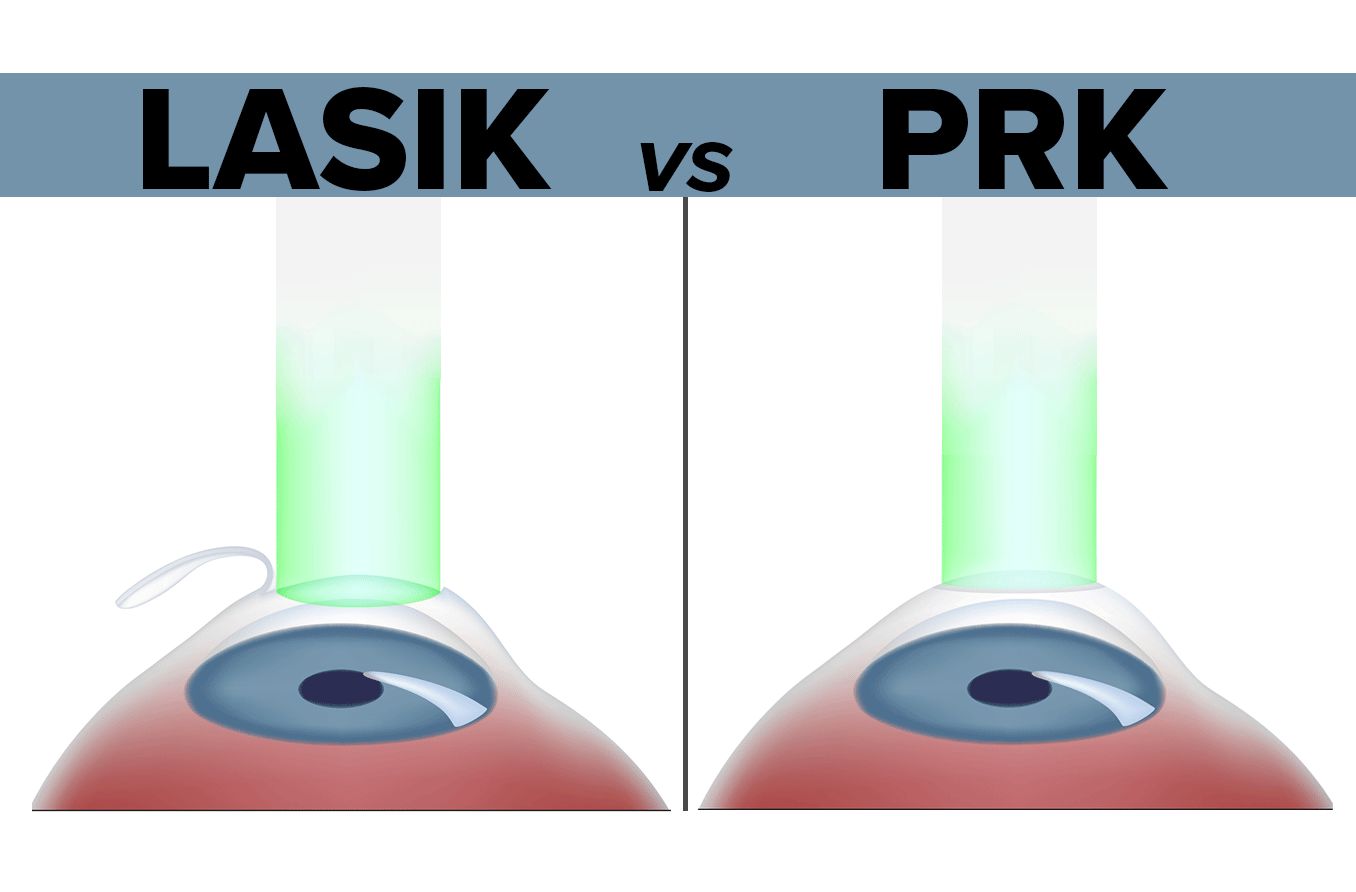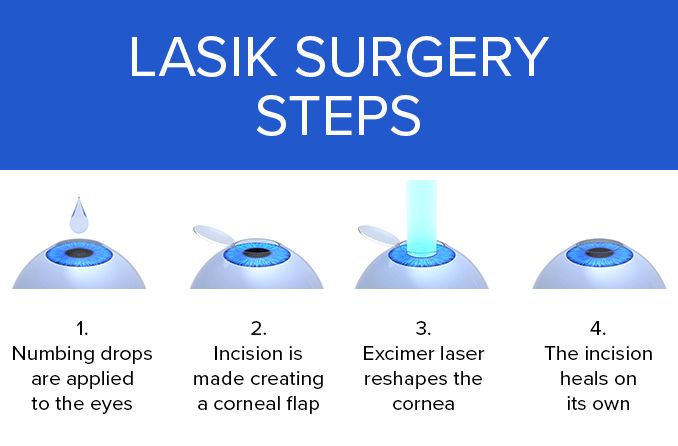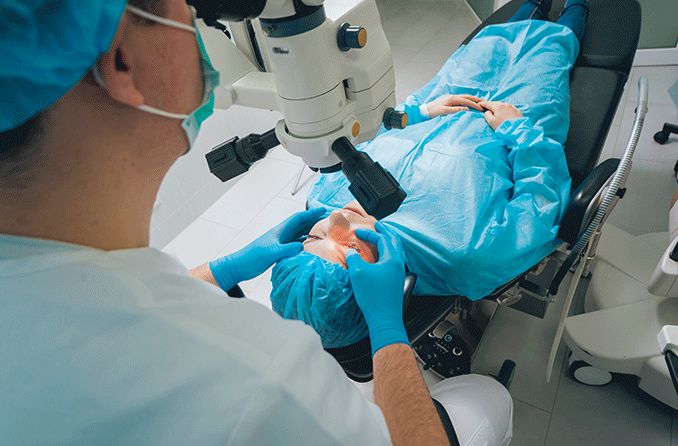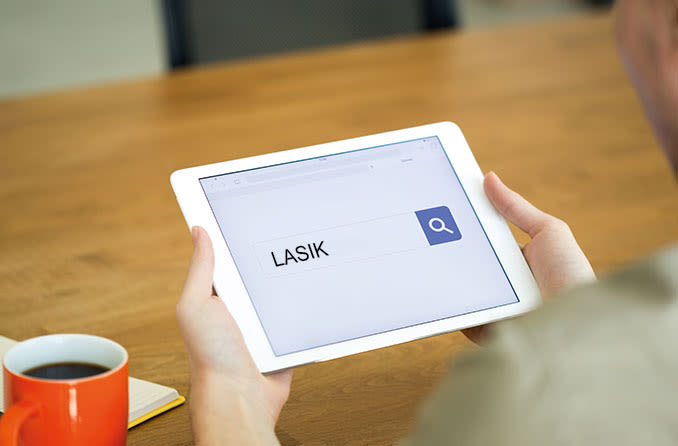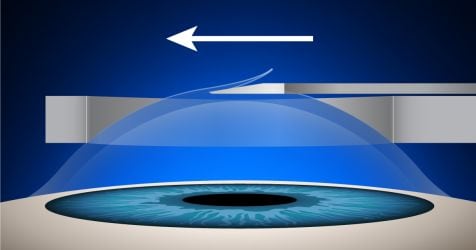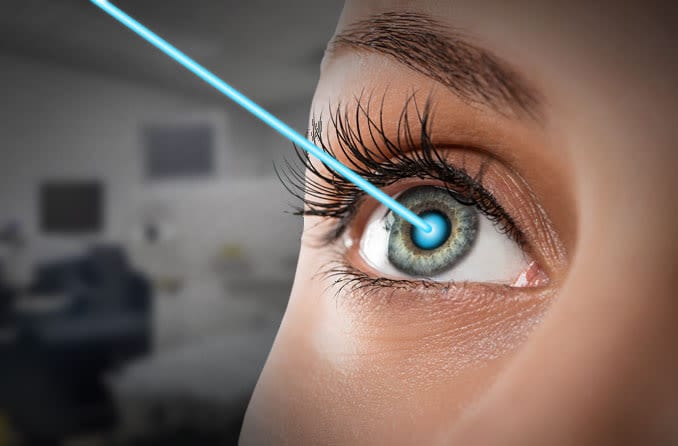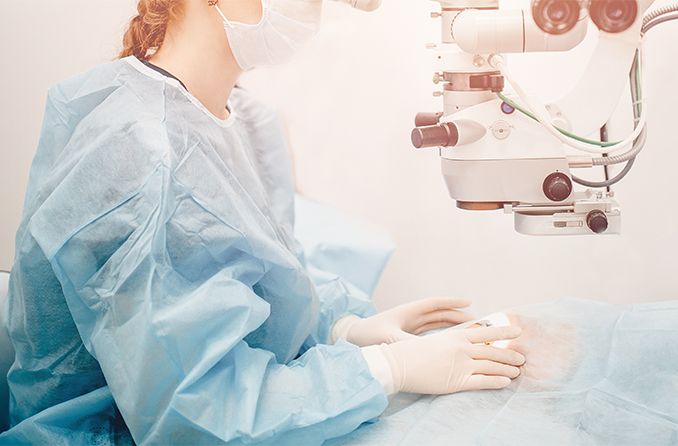PRK (photorefractive keratectomy) is a laser eye surgery that corrects refractive vision errors by changing the shape of the cornea. The cornea is responsible for refracting (or bending) light toward the center of the retina, and refractive errors happen when the shape of the cornea causes the refraction to be off-center.
PRK alters the contours of the cornea so that it bends light correctly. It is an effective treatment formyopia (nearsightedness),hyperopia (farsightedness) and/orastigmatism.
PRK was the original laser refractive surgery, approved by the FDA in 1995.LASIK was approved a few years later, and today there are many types of laser vision surgeries available. PRK can be a safe and effective option for people who aren’t ideal candidates for LASIK.
PRK candidates and criteria
PRK, LASIK, LASEK and other laser eye surgeries are performed with slightly differing techniques. These techniques, along with recovery time and cost, are what may make one kind of laser vision surgery a better option for you than another.
For example, PRK completely removes the epithelium to access the cornea, and then the epithelium grows back. In LASIK and some other types, a flap is created in the epithelium and part of the cornea instead. The flap is folded back for surgery and put back in place afterward.
Because no flap is created in PRK, it is often recommended for people who have very thin corneal tissue. It can also be a good choice for those who have dry eyes, since the flap method sometimes makes dry eye symptoms worse.
PRK may also be a better option for people who are at higher risk of eye injury, such as from sports or certain jobs. Being hit or bumped in the eye can move the flap out of place, even after it’s healed.
Good candidates for laser vision surgery need to meet certain criteria, such as having overall good eye health and a stable lens prescription. Having PRK and other laser eye surgeries won’t stop myopia or hyperopia that are still progressing. If your lens prescription isn’t stable for at least a year before surgery, your vision could potentially regress after surgery.
It’s also important to note that PRK won’t prevent or correct presbyopia, the age-related loss of near vision that begins around 40. For most who develop presbyopia after PRK, wearing reading glasses for close-up tasks is the easiest solution.
To find out if you’re a candidate for PRK, you’ll need to visit an eye doctor for a comprehensive eye exam. The doctor will check to make sure you meet all the criteria and then help you decide if PRK is right for you.
SEE RELATED: How much does PRK cost?
How is PRK performed?
First, your eye surgeon or another eye care professional will put numbing drops in your eyes. They may also ask you if you’d like to take a mild sedative if you feel nervous.
Your surgeon will then place a speculum over your eyes to keep you from blinking. Some PRK surgeons also use a suction ring to keep the eye still. You’ll feel slight pressure from the suction ring, but the numbing drops will block all other sensations in the eye.
Next, your surgeon will remove the very top layer of corneal cells (the epithelium) to access the next corneal layer. Depending on the surgeon, it will be removed with a surgical instrument, an alcohol solution or a “buffing” device.
After the epithelium is removed, you’ll focus on a target light. While you are focused, the surgeon will use an extremely precise, computer-controlled excimer laser to reshape the cornea. This laser removes microscopic amounts of tissue to create the exact corneal contours needed to sharpen vision. The whole process usually takes under 10 minutes per eye.
Finally, your surgeon will place a soft contact lens over the cornea as a kind of bandage. You’ll rest your eyes for a few minutes, and then you’ll be released. You won’t be able or allowed to drive, so you’ll need someone to take you home to recover.
PRK recovery time
It’s important to nap for a few hours right after PRK. When the numbing drops wear off, you will likely experience some soreness, a “foreign body” sensation, and slight burning and stinging. Napping the first few hours helps bypass the worst of the discomfort.
The epithelium that was removed will grow back on its own in about a week, and then your eye doctor can take out the bandage contact. During the first one to two weeks, you’ll still have blurry vision and extra light sensitivity.
Your surgeon will prescribe anti-inflammatory and antibiotic eye drops to use during your recovery. You’ll also need to use lubricating eye drops for several months after PRK to help combat dry eye symptoms. After the first day, most people find that over-the-counter pain relievers manage any lingering discomfort.
It’s a good idea to take this time off work and arrange for someone to drive you to your PRK follow-up exams. You’ll also need to be extremely careful not to touch your eyes or get water, soap or sweat in them — so no swimming or strenuous exercise. Limiting screen time and UV exposure are also crucial during healing.
Most people can see well enough to resume driving and normal activities within two weeks. However, it takes three to six months, and sometimes longer, to fully heal. It’s common to experience vision fluctuations, halos and glare, light sensitivity and reduced night vision for several months after PRK. Be sure to attend all of your follow-up exams so your doctor can monitor your healing progress.
HAVE MORE QUESTIONS? Read more about PRK vs LASIK here
PRK side effects, risks and results
With PRK and other laser vision surgeries, complications are rare and can largely be avoided by finding a highly experienced laser surgeon to perform your procedure.
According to the American Academy of Ophthalmology, the risks of PRK include:
Under or overcorrection
Corneal haze
Decreased night vision
Glare and halos
Overall decreased vision
Blindness
Most problems after laser vision surgery can be easily addressed with corrective lenses or a second enhancement surgery.
Research shows that about 97% of people achieve 20/20 visual acuity or better by one year after PRK. This doesn’t mean it takes a full year to see clearly, though. Blurriness and other vision fluctuations should decrease more and more after the first few weeks of healing. It takes a bit longer to achieve your best vision after PRK than after LASIK, but the results are just as successful.
CONSIDERING PRK? Schedule an exam with an eye doctor near you to find out if you are a candidate.
READ NEXT: A utologous serum eye drops
